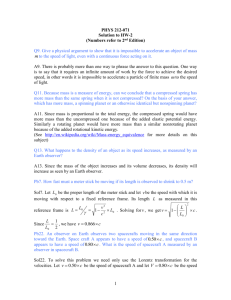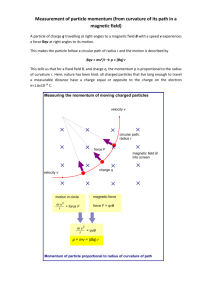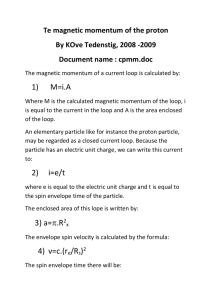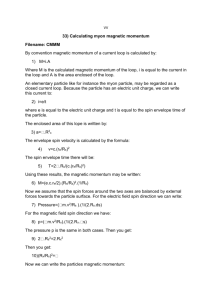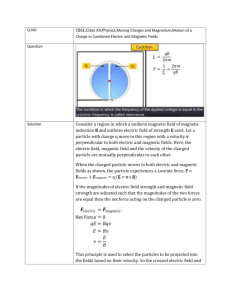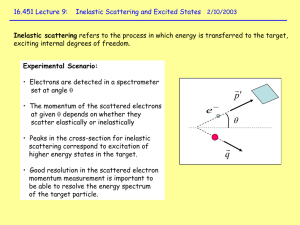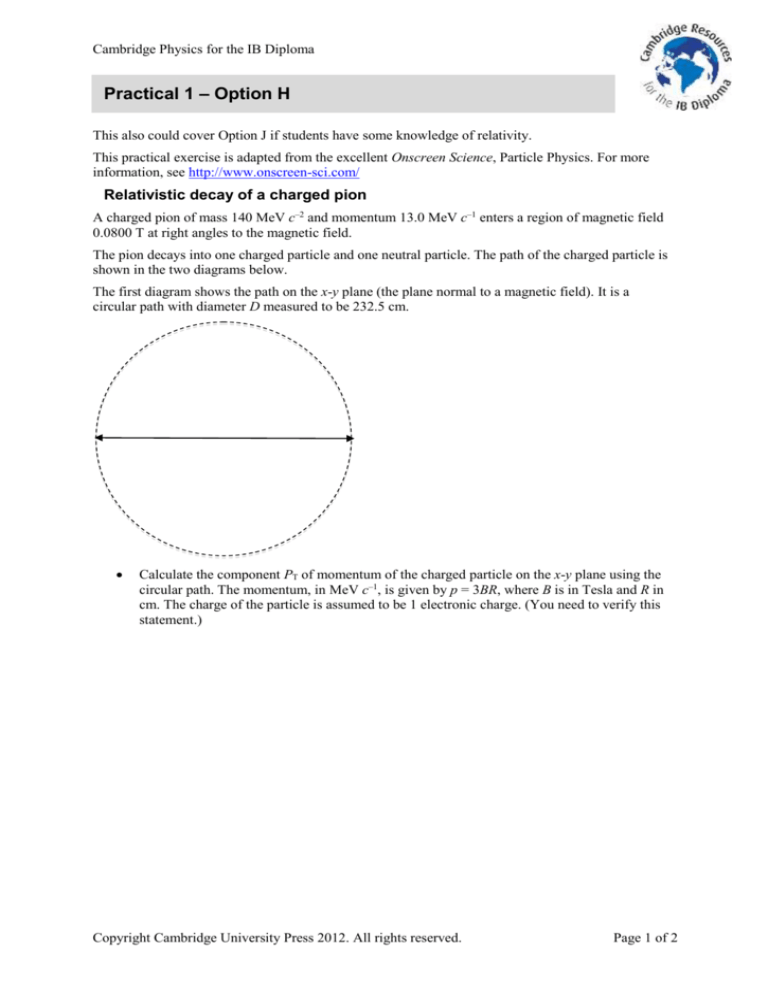
Cambridge Physics for the IB Diploma
Practical 1 – Option H
This also could cover Option J if students have some knowledge of relativity.
This practical exercise is adapted from the excellent Onscreen Science, Particle Physics. For more
information, see http://www.onscreen-sci.com/
Relativistic decay of a charged pion
A charged pion of mass 140 MeV c–2 and momentum 13.0 MeV c–1 enters a region of magnetic field
0.0800 T at right angles to the magnetic field.
The pion decays into one charged particle and one neutral particle. The path of the charged particle is
shown in the two diagrams below.
The first diagram shows the path on the x-y plane (the plane normal to a magnetic field). It is a
circular path with diameter D measured to be 232.5 cm.
Calculate the component PT of momentum of the charged particle on the x-y plane using the
circular path. The momentum, in MeV c–1, is given by p = 3BR, where B is in Tesla and R in
cm. The charge of the particle is assumed to be 1 electronic charge. (You need to verify this
statement.)
Copyright Cambridge University Press 2012. All rights reserved.
Page 1 of 2
Cambridge Physics for the IB Diploma
The path projected in a direction along the magnetic field is shown below. The distance l
travelled along the magnetic field during one period is 47.5 cm.
magnetic field
l
l
.
πD
Calculate the momentum along the magnetic field.
Hence calculate that the total momentum of the charged particle is 28.0 MeV c–1.
Explain why Pz PT
Momentum conservation demands that P Pq P0 where Pq is the momentum of the charged
particle and P0 is the momentum of the neutral particle.
Show that the momentum of the neutral particle has a magnitude equal to 30.8 MeV c–1.
Explain why 140.6 28.02 (mq c2 )2 30.82 (m0c2 )2 (energies in MeV) where mq and
m0 are the masses of the charged and the neutral particle respectively.
28.0
2
Deduce that mq c 2
Plot mq versus m0. (Let c = 1 to make your life easier.)
140.6 30.82 ( m0 c 2 ) 2
2
.
Look up a table of particle masses and estimate the values of mq and m0, explaining how you reached
your answer.
Copyright Cambridge University Press 2012. All rights reserved.
Page 2 of 2


